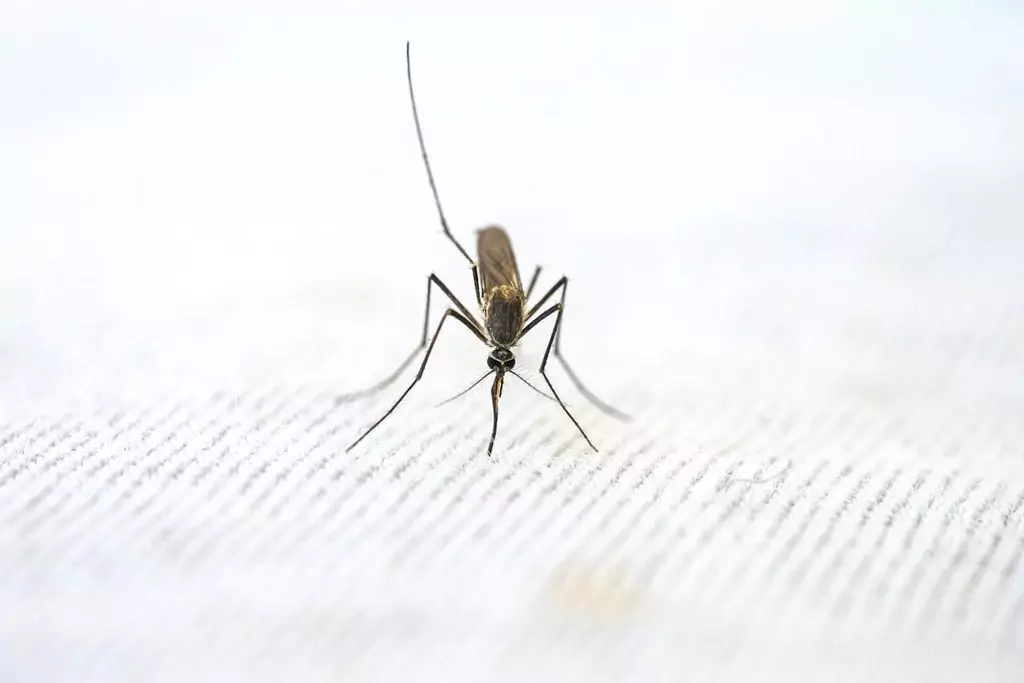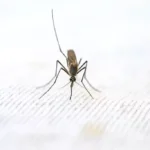Now Reading: Will Your Home Washer and Dryer Kill Ticks?
- 01
Will Your Home Washer and Dryer Kill Ticks?
- Home
- Home Appliances
- Laundry & Cleaning
- Will Your Home Washer and Dryer Kill Ticks?
Will Your Home Washer and Dryer Kill Ticks?
![]() Anne MaddisonHome Appliances, Laundry & CleaningAugust 11, 202584 Views
Anne MaddisonHome Appliances, Laundry & CleaningAugust 11, 202584 Views

If you’ve ever come home from a hike, a camping trip, or even just a day in the garden, you’ve probably done the quick “tick check.” Sometimes, though, you might not spot them right away. That’s when the question hits: if there’s a tick hiding on my clothes, will washing and drying them take care of it?
It’s a good question, and one worth asking. Ticks are not just annoying; they can carry serious diseases like Lyme disease and Rocky Mountain spotted fever. The idea of one slipping past your laundry routine and sticking around your home is enough to make anyone uneasy.
The tricky thing is, ticks are tougher than they look. They can survive in conditions that would kill many other pests. That’s why it’s important to understand how they react to water, heat, and the different settings on your washer and dryer.
In this guide, we’ll break down exactly what happens to ticks in your home laundry, what settings actually work to kill them, and what extra steps you can take to make sure they’re gone for good. By the end, you’ll know exactly how to protect yourself, your family, and your home from these persistent little hitchhikers.
Understanding Ticks and Why They’re Hard to Kill
What Ticks Are and How They Survive
Ticks are tiny parasites that feed on the blood of animals and humans. They belong to the arachnid family, which means they are more closely related to spiders than to insects. You will usually find them in grassy, wooded, or brushy areas where they can wait for a passing host to latch onto.
Once they attach, ticks can stay in place for days, slowly feeding. They do not need to eat often, which helps them survive in the wild for long stretches of time. Some ticks can live for months without a meal, patiently waiting for their next opportunity.
Ticks are also built for survival. They have strong outer shells, called exoskeletons, that help protect them from physical damage and environmental stress. This makes them surprisingly tough to kill compared to other small pests you might encounter.
Why Ticks Pose a Risk to Humans and Pets
The biggest concern with ticks is not the bite itself. It is what they can transmit. Ticks are known carriers of dangerous diseases, including Lyme disease, anaplasmosis, babesiosis, and Rocky Mountain spotted fever. These illnesses can cause serious symptoms such as fever, fatigue, joint pain, and even long-term health problems if not treated promptly.
Ticks can bite both humans and animals, which means your pets are also at risk. A dog or cat that spends time outside can easily pick up ticks and bring them into your home, where they may find their way onto people or other pets.
Because ticks can be so small, sometimes no bigger than a poppy seed, it is possible for them to go unnoticed until they have been feeding for hours. That is why prevention and quick removal are so important.
Ticks’ Resilience to Temperature and Water
Ticks are surprisingly resistant to environmental changes. Cold weather alone will not necessarily kill them, and they can survive in damp conditions without much trouble. While water can wash away dirt and debris, it is not always enough to kill a tick.
When it comes to laundry, this resilience means that a quick rinse in cold or warm water will likely not do the trick. Ticks can hold on tightly to fabric and keep breathing even after being submerged. They are also able to survive certain ranges of heat, so it takes a specific combination of temperature and time to make sure they are gone for good.
This stubborn nature is exactly why knowing the right washer and dryer settings is important if you want to eliminate ticks from your clothing.
How Your Home Washer Affects Ticks
Can Cold Water Kill Ticks?
Cold water on its own is not effective at killing ticks. While it might rinse away some dirt and loose debris, ticks are built to hold on tightly and survive in cooler temperatures. Their hard outer shell and slow metabolism make them resistant to a short, cold wash cycle. Even if a tick becomes detached from clothing, it may still be alive and capable of crawling back onto you or your pet later.
If you only use cold water, you are relying mostly on the force of the water to dislodge ticks, and that is not a guarantee. Cold water cycles are better for protecting delicate fabrics, but they are not the best choice for killing pests.
Does Hot Water Work Better?
Hot water is much more effective at killing ticks than cold water. A study has shown that temperatures above 130°F (54°C) can be lethal to ticks if they are exposed long enough. Washing clothes in hot water gives you a better chance of killing ticks rather than just rinsing them off.
However, temperature is not the only factor. The length of the wash cycle matters too. A quick hot rinse might not be enough time for the heat to fully penetrate and kill the tick. A full hot cycle is more effective, especially if followed by high-heat drying.
One thing to keep in mind is fabric care. Always check the clothing label before using hot water, since some materials can shrink or fade. If your clothes can handle it, hot water is the better option for dealing with ticks.
The Role of Detergent in Killing Ticks
Detergent is useful for cleaning clothes, but it is not specifically designed to kill ticks. While the soapy water may help break down oils on the tick’s outer shell, it is not enough to guarantee death. The main benefit of detergent in this situation is that it helps the water penetrate fabrics and may loosen a tick’s grip.
When combined with hot water, detergent can increase the odds of removing and killing ticks. It also ensures that your clothes come out clean and fresh, which is an added bonus after being outdoors. But detergent alone will not solve the problem. You still need the right water temperature and wash cycle to truly deal with ticks in your laundry.
How Your Home Dryer Affects Ticks
The Effect of Heat on Ticks
Heat is one of the most reliable ways to kill ticks. Unlike washing, which can be inconsistent depending on water temperature, drying exposes ticks to sustained high heat that their bodies cannot handle. Ticks have a limited tolerance for temperature, and prolonged exposure to high heat causes their cells and internal systems to break down.
Research shows that temperatures of 130°F (54°C) or higher are lethal to ticks if maintained for several minutes. Most home dryers can easily reach or exceed this temperature on a high-heat setting, especially if the cycle runs long enough.
Recommended Drying Time and Temperature
If your goal is to kill ticks, use the highest heat setting your clothes can safely handle. Run the dryer for at least 10 minutes on high heat for dry clothes, or 15 to 20 minutes if the clothes are damp. This ensures the heat reaches deep into the fabric where ticks might be hiding.
Keep in mind that a short, low-heat tumble is not enough to kill ticks. Even a few surviving ticks can pose a risk once you wear the clothes again. Always check your clothing labels, but when possible, aim for the hottest safe setting and a longer drying time.
Why Drying May Be More Effective Than Washing Alone
Drying often works better than washing because ticks are much less resistant to heat than they are to water. A hot wash cycle can help, but if the water does not stay hot enough for the full duration, some ticks might survive. The dryer adds an extra layer of protection by exposing them to consistent, penetrating heat.
Another advantage is that the tumbling action in the dryer moves the clothes around, making it harder for ticks to cling to one spot and avoid exposure. When combined with hot water washing, high-heat drying gives you the best chance of eliminating ticks from your clothing before you bring them back into your home.
If you are setting up a laundry area and wondering about a washer or dryer on top, our guide explains the best way to stack them safely and efficiently.
Best Laundry Practices to Kill Ticks at Home
Step-by-Step Tick Removal from Clothing
- Check your clothes before bringing them inside. If you have been in tall grass, wooded areas, or brush, inspect your clothing outdoors. Look closely at seams, cuffs, and collars, since ticks often hide there.
- Shake out your clothes. Give them a strong shake away from the house. This can dislodge any ticks that are only loosely attached.
- Place clothes in a sealed bag if you cannot wash immediately. This prevents ticks from escaping into your home. If you plan to wash them later, keep the bag closed and wash as soon as possible.
- Handle with care. Avoid pressing the clothes against your body while carrying them to the laundry to reduce the risk of ticks transferring to your skin.
Washing Settings That Work Best
- Use hot water whenever possible. Set your washer to at least 130°F (54°C) if your clothing’s care labels allow it.
- Run a full cycle. A short wash may not give enough exposure to heat and agitation to remove ticks effectively.
- Add detergent. While detergent does not kill ticks directly, it helps loosen their grip and ensures a thorough clean.
- Avoid cold or lukewarm cycles for tick removal. These temperatures are unlikely to kill ticks and may allow them to survive the wash.
Drying Settings That Ensure Ticks Are Gone
- Use the highest heat setting your clothes can safely handle. This is the most effective way to kill ticks.
- Dry for at least 10 minutes if clothes are already dry, or 15 to 20 minutes if damp. This ensures the heat penetrates deep into the fabric.
- Check clothes after drying. While it is rare for ticks to survive high-heat drying, a quick inspection gives you peace of mind.
- Avoid air drying if ticks are a concern. Without heat, ticks can survive and remain a risk.
Additional Tips for Preventing Tick Infestations at Home
Tick-Proofing Your Yard and Pets
Since ticks often come from outdoor spaces, keeping your yard tick-friendly for you but not for them is important. Keep grass trimmed short, clear away leaf litter, and remove tall weeds where ticks can hide. If your yard backs onto wooded areas, consider adding a barrier of wood chips or gravel to make it harder for ticks to cross into your lawn.
Your pets can also bring ticks indoors. Regularly check dogs and cats after they have been outside, paying close attention to ears, neck, and underbelly. Using veterinarian-approved tick prevention treatments year-round can significantly reduce the risk.
When to Seek Professional Pest Control
If you notice ticks in your home despite taking precautions, or if you live in an area with a high tick population, it may be time to call in a professional. Pest control experts can assess your property, treat problem areas, and suggest long-term strategies for keeping ticks out.
Professional treatments are especially helpful if you have a large yard, live near wooded areas, or have multiple pets that spend time outdoors. They can target the places where ticks breed and help break the cycle before it becomes a bigger problem.
Final Thoughts
Washing your clothes after spending time outdoors is an important first step, but washing alone may not always kill ticks. These pests are resilient and can survive cold and even warm water. The most effective way to ensure they are gone is to follow a hot wash with high-heat drying. The sustained heat in the dryer is often what makes the difference.
By choosing the right laundry settings, checking your clothes before washing, and taking extra precautions like shaking garments outdoors, you can significantly reduce the risk of bringing ticks into your home. Staying consistent with these habits is one of the best ways to keep your household safe.
Protect your home and family. Next time you are outdoors, know exactly how to keep ticks out of your laundry and your life.
If you are deciding between a washer dryer combo vs separate units, our guide can help you compare the pros and cons to find the right fit for your home.
Related Posts
Previous Post
Next Post
Home AppliancesJuly 28, 2025
Can Air Conditioner Make You Sick?
Home SecurityJuly 30, 2025
Signs Your Home Router Might Be Hacked
Home AppliancesAugust 24, 2025
Are Home Air Conditioner Tune Ups Necessary
Climate ControlAugust 23, 2025
Can Air Conditioning at Home Trigger Asthma?
- 03
Home AppliancesJuly 28, 2025
Can Air Conditioner Make You Sick?
- 04
Home SecurityJuly 30, 2025
Signs Your Home Router Might Be Hacked























